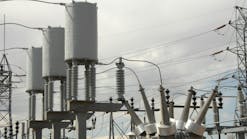FERC's New Draft Interconnection Process: Hindrance or Help?
In many sections of the document, FERC asked for additional input and information. Since this is a draft, there is time to read and submit information before the proposed new process is finalized. Readers are encouraged to speak up to FERC, should they see issues or have information that they think FERC should review.
Speculative applications raise costs and add time for the applicants, the transmission owners, and the Independent System Operators (ISOs). Removing as much of this excess time and costs as reasonable is important to minimize costs in the energy transition.
What May Not Work
The first issue is requiring transmission providers, who typically have fewer planners and analysts than ISOs, to provide a pre-queue study that shares significant data about the transmission system’s ability to support the proposed interconnection. This additional step will probably increase, rather than shorten, the time for approval; but it may reduce the number of speculative applications that enter the queue.
The second move by FERC was to require some level of financial commitment from the applicant. Unfortunately, the requirements are trivial compared to the investment for large projects. FERC should increase the commitment for entering the study queue to at least 25% of the estimated project costs. Allowing any large interconnection to proceed into the queue without an off-taker agreement or plan, if the applicant is a load-serving or wholesale market participant, means speculators will continue to play the same games in the interconnection queue.
Next FERC suggests using cluster studies, but FERC did not prohibit applicants from changing their plans mid-study. This is the largest issue slowing cluster studies; whenever one applicant changes its plans, the others react, and the study is back to square one. FERC should have required applications to remain unchanged until the initial study was complete. At that point, every applicant in a cluster gets one chance to make changes to their proposal or withdraw, and a final re-study is done. Once in the restudy queue, every applicant should be committed to pay the cost of interconnection, regardless.
If the ability to change the applications continues unabated, it is likely that the deadlines proposed by FERC will never be met. ISOs currently using cluster studies all end up with re-study after re-study as applicants vie with each other to maximize returns and minimize investment.
What Works
A major win for FERC in RM22-100 is allowing two or more applications to use a single point of interconnection. This will make it easier to install storage or additional generation at an existing or proposed new interconnection. Permitting multiple applications to use one interconnection might move more new projects closer to firm power (with storage) than most variable renewables interconnections are now.
Cost sharing on grid upgrades is now encouraged, which will work well unless an applicant pulls out of the process late, leaving the rest of the applicants with higher costs. Requiring applicants to post bonds for shared upgrade costs is a must. On the upside, if a group of applicants pays for an upgrade, when future interconnections are installed in that area, new applicants will be expected to contribute to completed upgrades. When this happens, proportional rebates could be given to the early movers who initially paid for the upgrades.
FERC’s decision to require proof of exclusive site control, and specific acreage for each type of generation, should reduce speculation. This factor is likely to have the largest practical effect in the reform.
Watch Out
One area that both applicants and transmission owners need to pay special attention to is the alternate technology section, which allows use of dynamic line rating and other newer technologies. Expect that this section will generate more arguments over the next 20 years than all the rest of the changes. FERC has not done a wonderful job of defining when alternative tech should be used, nor has it provided a list of generally approved alternative technologies. Yes, this leaves the rules open to utilizing any future technology, but almost every applicant is going to try to lower their costs by having multiple alternatives considered, even when the technology is ill-defined. Expect this to increase the total time from application to operation for many new applications.
Modeling requirements for transmission owners and ISOs will increase significantly based on this draft, while timelines will be fixed, including daily penalties for missing deadlines. Some of FERC’s suggested changes increase the complexity and therefore the time required to complete the studies. In other sections, FERC is working hard to curb speculation. On balance, most organizations will struggle to meet the proposed tighter deadlines with their existing staff and modeling tools.
Doug Houseman is principal consultant at 1898 & Co., a Burns & McDonnell division.


